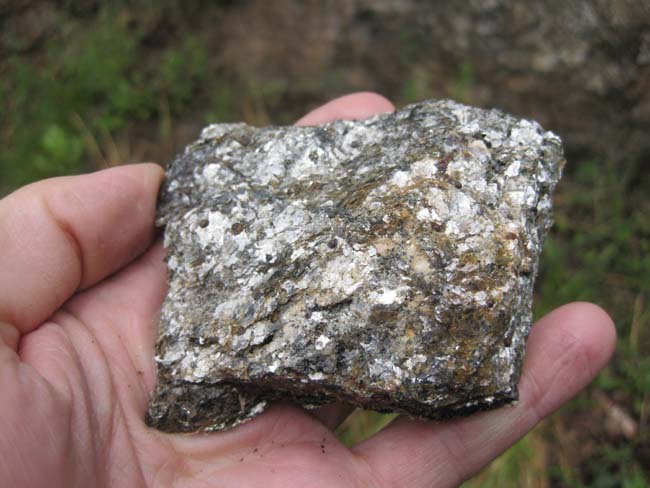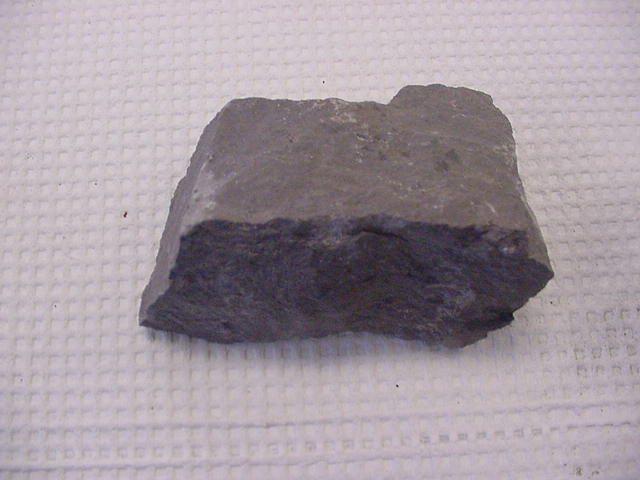The best way to study the metamorphic rocks is to separate them into two groups:
- Follated Rocks - slate, phyllite, schist, and gneiss
- Non-folliated Rocks - marble, quartzite, hornfels, and coal
Foliation is a layered fabric in the rock developed during metamorphism. This layering MUST be developed during metamorphism. It cannot be relic sedimentary layering. The layering observed in the foliated rocks is the result of a preferred orientation of constituents in the rocks such as platey and/or elongate minerals or stretched pebbles or fossils. The platey minerals are often the micas (muscovite, biotite, chlorite) and the elongate mineral is often amphibole (hornblende). Two other minerals that could produce a foliated texture include talc and tourmaline.
Key clues to identify the folitated rocks:
- slate: very fine-grained; dull appearance; can be red, black, gray, or green; displays good to excellent rock cleavage; foliation type: slatey cleavage

- phyllite: fine-grained; greasy/glossy sheen; can be black, gray, or green typically; can display good to excellent rock cleavage; the layers are often crinkled into tiny folds; there is no specific foliation type so, in this class, we will call it phyllite-type.
 |
| Garnet mica schist |
- schist: medium- to coarse-grained; sparkly or glittery; foliation type: schistosity May be mica-rich or may be amphibole-rich (hornblende-rich).
- gneiss: medium- to coarse-grained; dark and light banding; foliation type: gneissic banding.
 |
| Beginning with a shale parent rock, this image shows the development of foliation in rocks metamorphosed under regional metamorphism. This continuum is called prograde metamorphism. |
Non-foliated rocks do not have a layering present that was developed during metamorphism either because there is no elongate or platy mineral present as is the case with quartzite and marble or the rock was metamorphosed under confining stress rather than differential stress.
Key clues to identify the non-foliated rocks:
- marble: fine- to coarse-grained; white to pink; no layering present; crystals are usually visible and the cleavage planes usually reflect a lot of light giving the rock a glittery luster; hardness is less that a steel nail hardness < 5.5); often reacts with acid.
- quartzite: fine- to coarse-grained; white to pink; no layering present; crystals are not usually visible; conchoidal fracture is sometimes observed on the fracture planes; hardness is greater than a steel nail (hardness > 5.5)

- hornfels: fine-grained, dark rock with no layering; hardness > 5.5

- coal: black "rock" with no grains present; conchoidal fracture is common; "rock" has a low density










No comments:
Post a Comment